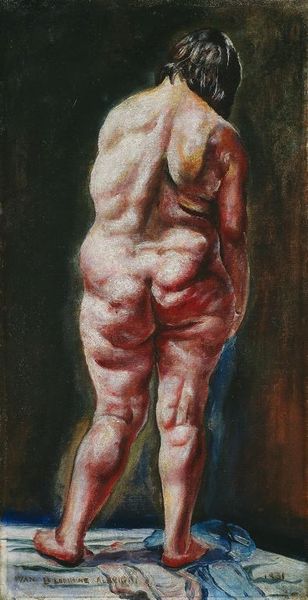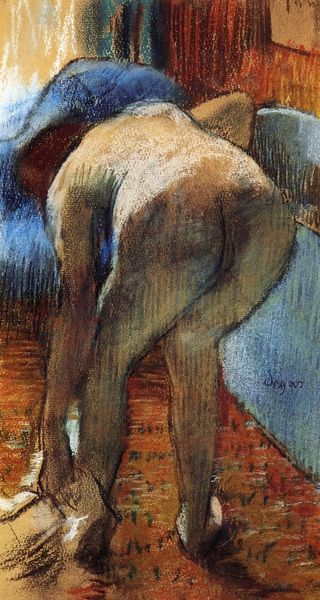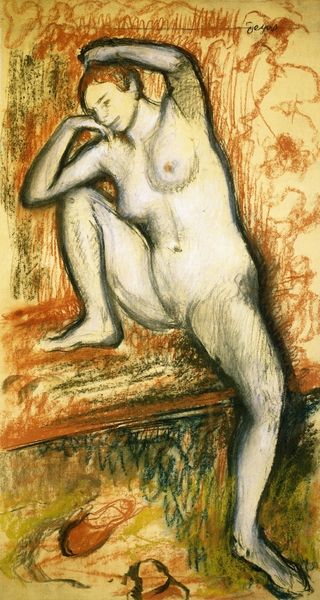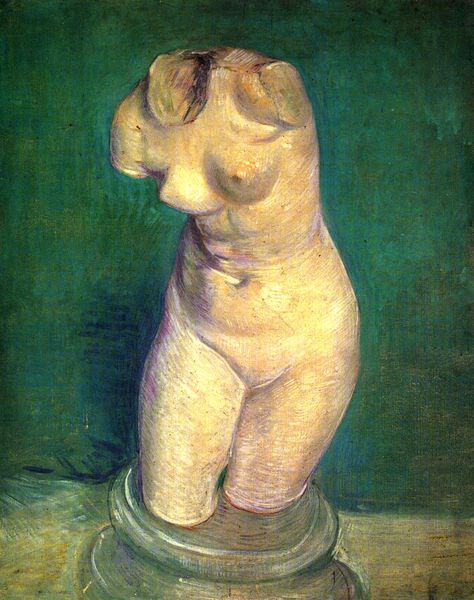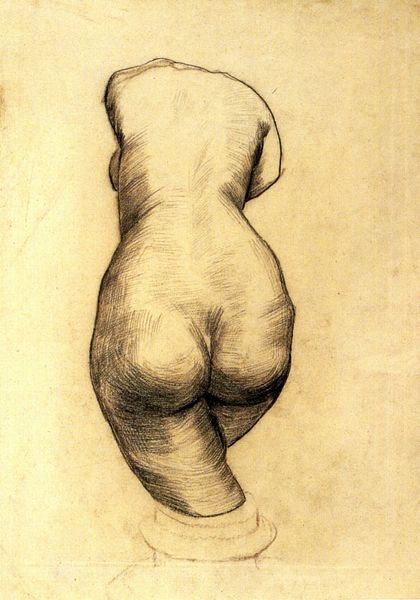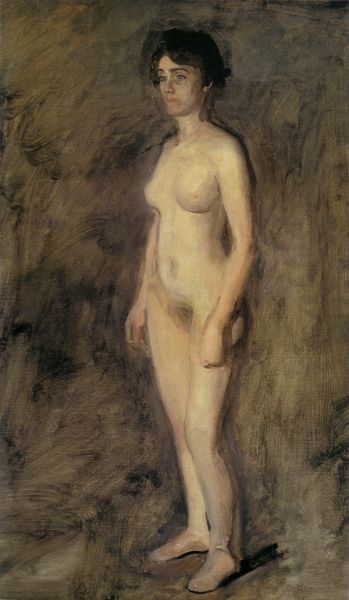
painting, oil-paint
#
painting
#
oil-paint
#
figuration
#
oil painting
#
history-painting
#
nude
#
realism
Copyright: Public domain
Curator: Here we have Vincent van Gogh’s 1886 oil painting, "Plaster Statuette of a Female Torso," housed in the Van Gogh Museum. Editor: My immediate response is that it feels... tentative. The blues and yellows, almost sickly in tone, give it a sense of unease. The sculptural form is both present and dissolving. Curator: The human form has a long lineage of symbolism across different cultures. How do you interpret the lack of a head or limbs? Is it about fragmenting ideals of feminine beauty? Editor: I see it more as a formal exercise, actually. Van Gogh is wrestling with light, shadow, and volume, not so much dissecting archetypes. The modeling, especially around the back and shoulder, feels very studied. Look how the artist uses the cross-hatching strokes to try and model depth to the female form; you can see a conscious understanding of academic method fighting with Van Gogh's artistic will. Curator: I agree that it represents a study in technique, and consider how plaster— a readily available substance —was a means of expressing not necessarily purity, but potential. This artistic choice speaks to what Van Gogh found necessary to practice. Editor: I'm struck by the relationship between the solidity of the torso and the relative abstraction of its plinth. Van Gogh flattens space by blending greens and browns into each other blurring the boundaries of foreground and background Curator: What you call the "abstraction" of the plinth suggests that, despite an intellectual adherence to realism, perhaps a touch of modernity already infected even early works like this, questioning established ways of seeing and depicting the world. This choice underscores that the piece is both sculpture and symbolic form in the artist’s consciousness. Editor: So, it’s not just a body but a conduit of history? Curator: Exactly. Consider how the presentation encourages reflection about our cultural past, and how he may not break away but challenge or reinvigorate it with the new color scheme. Editor: I was preoccupied with texture and plane but I’ll have to agree, your reading does open a new context. Curator: That’s why it is important to consider more than the materiality of an artwork. Editor: Point taken. Thanks, I now see much more than sickly colors now.
Comments
No comments
Be the first to comment and join the conversation on the ultimate creative platform.
